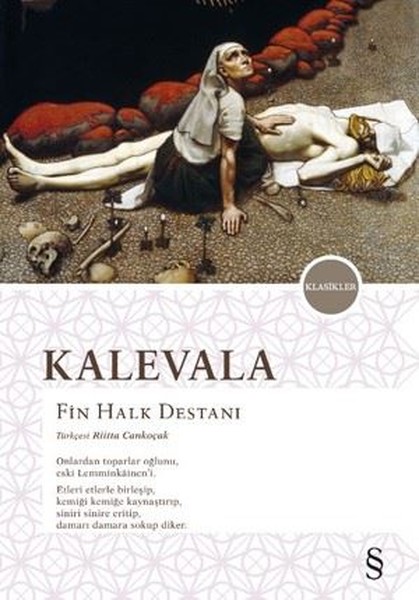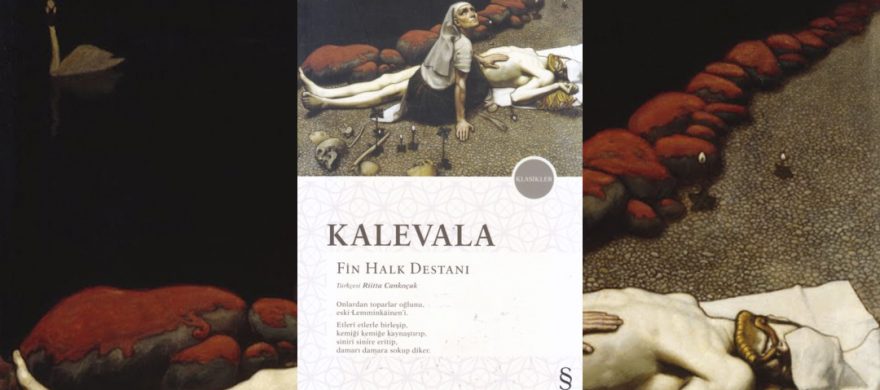Riitta Cankoçak: Kalevala Fin Halk Destanı
Riitta Cankoçak is a Finnish-Turkish freelance artist. She was born in Jyväskylä and lived in Turkey from 1996 until the country’s tense political situation forced her to return to Finland some time ago.
“I have made sculptures, opened exhibitions in cities around the world and worked on various human rights projects, as far as the circumstances of my life have allowed. Literature has always been for me a story about what we are not in real life. Of course, I myself like to scribble down all kinds of things that I have experienced as essential. I have published five works of poetry in Turkish, short stories, a novel and poetry also in Finnish. I am a poet.”
Riitta Cankoçak says her sprawling studies have been aimed at understanding the humanity that unites peoples in this age.
“I have lived in many different countries and tried to ‘sing’ in the local language in the name of peace and understanding. The most recent language I have learned is Turkish. I am married to Kerem Cankoçak, a nuclear physicist from Istanbul, and for about 15 years I have been trying to understand the mythical language of Turkish. My son, who sailed with us from Sweden to Turkey as a baby, has been my best teacher in learning the language so far. We were both foreigners when we arrived in Turkey, linguistically of course, but also conceptually tabula rasa, a blank slate. This allowed the words of the new language to form in our minds at the same time and in a similar tune. After my son, the villagers in the area where we lived took to teach me. I lived in their loving company for what I called my first few years as an apprentice. This ‘folk school’ was combined with modern education, but I feel that the translation of the Kalevala in particular may have been successful because of the direct learning of the new language from the people. I received an indescribable amount of love from them and learned the local tune. I owe them a debt of gratitude; the Kalevala is my clumsy way of expressing my gratitude and admiration for people’s ability to love life, with all its beauties and miseries, in the midst of everyday life.”
Riitta Cankoçak began translating the Kalevala about 10 years ago, with the help of Björn Collinder‘s Swedish translation of the Kalevala (1948) and Pino Bava‘s Italian translation (1957). He also had access to Lâle and Muammer Obuz‘s Turkish translation (1965). Riitta was particularly interested in how different cultures have tried to express words and phrases in a way that works locally.
“Being fluent in the languages I mentioned above, plus English, it was easy to read, but I was surprised to discover how many different interpretations there can be of the same work. That is, of course, natural when it is a song. However, I wanted to concentrate on keeping the Kalevala as a whole and tried to translate the whole story from beginning to end.”
The most puzzling issue in the whole translation process was the metre. Riitta was determined, however, to try to understand the old Turkish language, which was used in the Anatolian region before the Islamic faith introduced different linguistic worlds.
“I read and listened to the Turkish ancient poet Yunus Emre and interpretations of his songs. He used the koşuk metre in his poetry, whose verses are generally composed of eight syllables, i.e. when sung, one verse consists of four phonetic units divided into four. This model was, in my opinion, very close to the trochaic metre familiar from the Kalevala.”
Initially, Riitta Cankoçak tried to remain faithful to the traditional metre, but the flexibility of the language and its natural fit with the Turkish language required a freer approach.
“And since I also wanted to give the content of the song its own important role, I decided to use a prose style in the end. It also gave me greater freedom not to gloss over the genuine ugliness of life that the Kalevala world manages to convey to its listeners in its unadorned form. I experienced Kalevala more as a traditional symphony, a melody of folk voices, for which I tried to find synonyms in local, familiar soundscapes.
In the end, the most challenging thing was the necessary conflict between hopelessness and hope: perhaps the doubts associated with translating an aesthetic work. In general, linguistic translation is, in my opinion, completely impossible from an aesthetic point of view, hopeless.”
But Riitta Cankoçak had a strong desire to give voice, through language, to the people’s own, pure style. Through artistic expression, she wanted to spread the idea of peace between styles and linguistic classifications.
“I undertook this work in order to make my contribution and to defend a genuine language which, through its poetry, can comfort the cultural explorers of our humanity. And because I believe that the language we communicate to each other in words and songs is close to humanity in its authenticity and simplicity. It speaks about us. A kind of honest allegorical attitude is conveyed through mythology and fairy-tales. It activates forms of linguistic expression in untamed areas of our consciousness. Perhaps pagan songs and incantations have inspired religious groups as an extension of prayer culture. In the end, a wild journey, a wonderful adventure with a native language.”
 Kalevala – Fin Halk Destanı.
Kalevala – Fin Halk Destanı.ISBN 9786051851853
Translated Riitta Cankoçak
Publisher: Everest
2017
